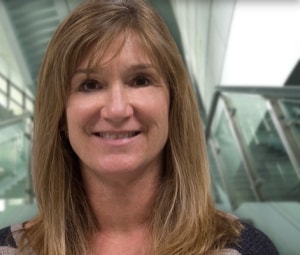

The industry will continue to demand solutions for insulation and protection issues.
Laura holds a degree in Mechanical Engineering from NC State University and joined TE in 1998. She began her career as a design engineer working for both the telecommunications and energy business units designing new products. Over the years she has continued using her engineering skills working in READ (Research Engineering and Development) and Product Management. Currently she is working as a product development engineer in the Wildlife and Asset Protection group, developing products that protect and insulate against animal caused outages on high voltage equipment. She is the lead person for TE's Rapid Response group that works directly with customers to quickly develop customized products that solve their asset protection issues.
What inspired you to become an engineer?
I always enjoyed math and science and chose mechanical engineering because it seemed like such a diverse field with numerous job opportunities. There are so many career paths to choose from and the most challenging, diverse and creative jobs are in the engineering field.
While working on the Animal Protection Product Line, what are some challenges you came across, and how did you solve them?
Power companies do not want to take an outage to install animal protection products, so we had to develop designs that could be installed on energized equipment that operated at very high voltages. We used brain storming sessions, worked with industry experts, and made lots of prototypes to get as much Voice of the Customer feedback as possible. In this way, we made sure we were developing an innovative product that our customers would want to purchase because it worked well and solved their problem.
Where do you think the Insulation and Protection Industry will be 20 years from now? What about 10 years from now?
Our product line barely existed 25 years ago as the Power Generation industry was just beginning to realize the benefit of animal protection products. In the past 20 years, we have progressed from offering just a few substation products, to a huge line of products for substation, distribution and transmission applications. I believe the industry will continue to demand solutions for insulation and protection issues that require innovative materials and designs that have to work in harsh environments.


The industry will continue to demand solutions for insulation and protection issues.
Laura holds a degree in Mechanical Engineering from NC State University and joined TE in 1998. She began her career as a design engineer working for both the telecommunications and energy business units designing new products. Over the years she has continued using her engineering skills working in READ (Research Engineering and Development) and Product Management. Currently she is working as a product development engineer in the Wildlife and Asset Protection group, developing products that protect and insulate against animal caused outages on high voltage equipment. She is the lead person for TE's Rapid Response group that works directly with customers to quickly develop customized products that solve their asset protection issues.
What inspired you to become an engineer?
I always enjoyed math and science and chose mechanical engineering because it seemed like such a diverse field with numerous job opportunities. There are so many career paths to choose from and the most challenging, diverse and creative jobs are in the engineering field.
While working on the Animal Protection Product Line, what are some challenges you came across, and how did you solve them?
Power companies do not want to take an outage to install animal protection products, so we had to develop designs that could be installed on energized equipment that operated at very high voltages. We used brain storming sessions, worked with industry experts, and made lots of prototypes to get as much Voice of the Customer feedback as possible. In this way, we made sure we were developing an innovative product that our customers would want to purchase because it worked well and solved their problem.
Where do you think the Insulation and Protection Industry will be 20 years from now? What about 10 years from now?
Our product line barely existed 25 years ago as the Power Generation industry was just beginning to realize the benefit of animal protection products. In the past 20 years, we have progressed from offering just a few substation products, to a huge line of products for substation, distribution and transmission applications. I believe the industry will continue to demand solutions for insulation and protection issues that require innovative materials and designs that have to work in harsh environments.


